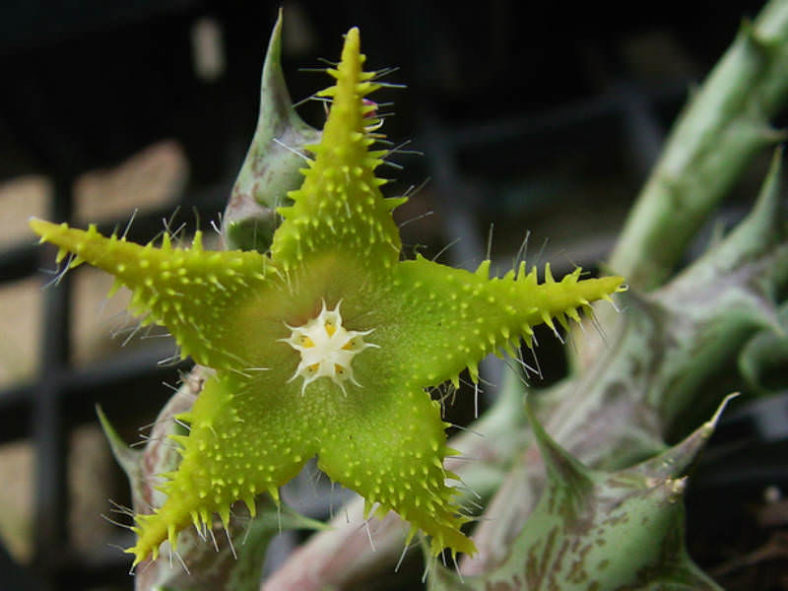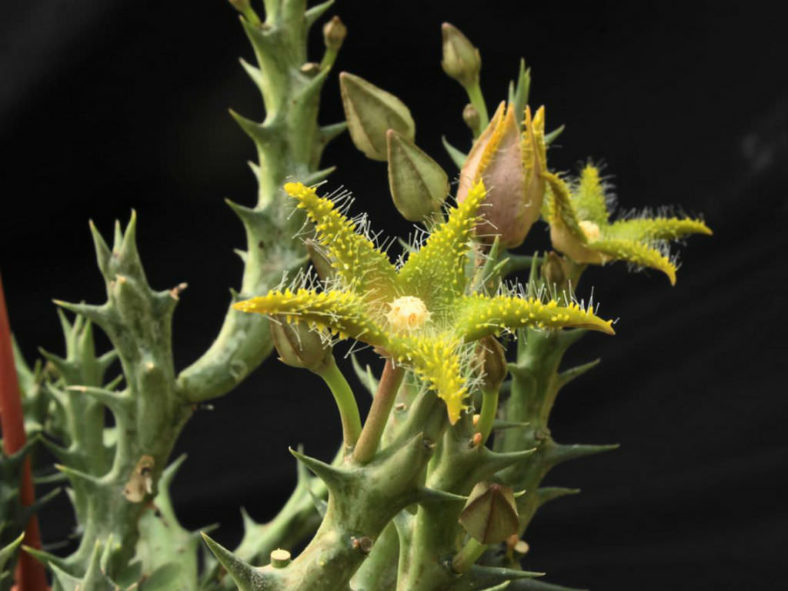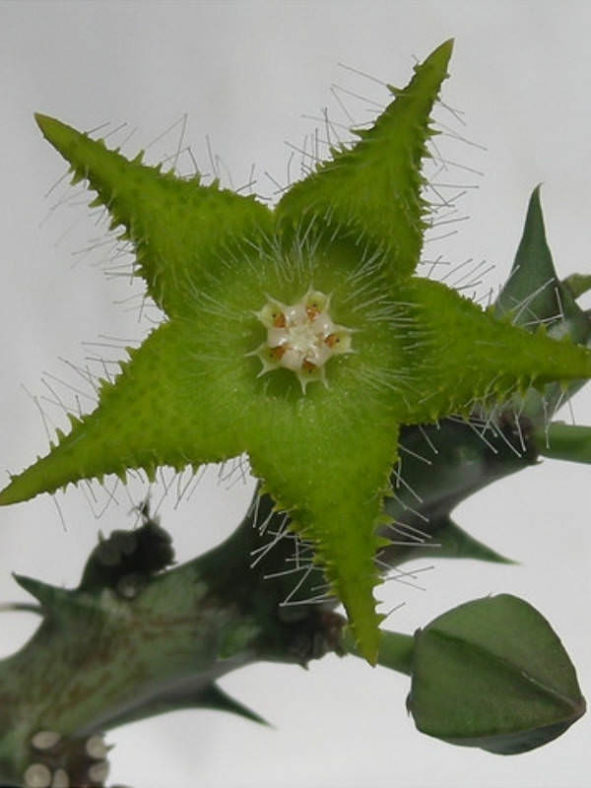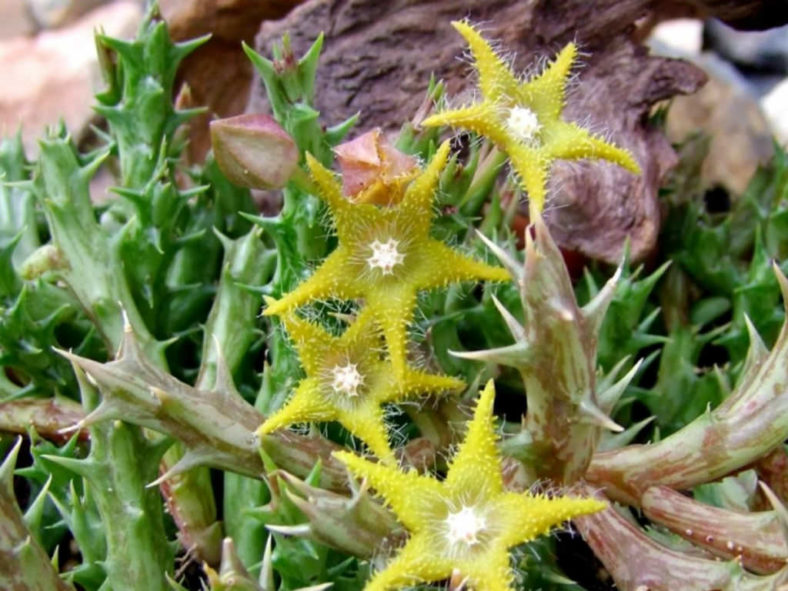Scientific Name
Orbea dummeri (N. E. Br.) Bruyns
Synonym(s)
Stapelia dummeri, Caralluma dummeri, Pachycymbium dummeri, Angolluma dummeri
Scientific Classification
Family: Apocynaceae
Subfamily: Asclepiadoideae
Tribe: Ceropegieae
Subtribe: Stapeliinae
Genus: Orbea
Etymology
The specific epithet "dummeri" (pronounced "DUM-mer-ee") honors Richard Arnold Dümmer (1887-1922), a South African botanist who collected in South Africa, Kenya, and Uganda.
Origin
Orbea dummeri is native to Kenya, Tanzania, Uganda, and Burundi.
Description
Orbea dummeri, formerly known as Stapelia dummeri, is an unusual succulent with pale grey-green to almost white stems mottled with reddish-purple. It can grow up to 4 inches (10 cm) tall and spreads, forming mats up to 12 inches (30 cm) wide. The stems are erect, spreading, or decumbent and have long pointed tubercles arranged loosely into four rows along the stem with a groove between the rows.
The flowers are hairy, olive-green, star-shaped, and appear on short stalks in summer.

Hardiness
USDA hardiness zones 9a to 11b: from 30°F (1.1°C) to 50°F (10°C).
How to Grow and Care
Several species are fairly easy to grow. Others, often those with slightly hairy stems and the more unusual flowers, are more challenging and require careful watering (with some fertilizer) during the growing season and complete water withdrawal during the winter months. A minimum winter temperature of 10°C (50°F) is acceptable if the soil is kept dry. A heated growing bench or incubator may help delicate plants get through the colder months. However, many species live under shrubs in their habitat and prefer light shade rather than full sun.
A gritty compost is essential, and clay pots are advisable for the more delicate species. Some growers prefer mineral-only compost to minimize the chance of a fungal attack on the roots. A layer of grit on the compost's surface prevents moisture from accumulating around the base of the stems.
Keeping Stapelias and their roots free of pests such as mealybugs is the key to success, as fungal attack often occurs due to insect damage to stems.
See more at How to Grow and Care for Stapelia.
Links
- Back to genus Orbea
- Succupedia: Browse succulents by Scientific Name, Common Name, Genus, Family, USDA Hardiness Zone, Origin, or cacti by Genus
Photo Gallery
Click on a photo to see a larger version.


